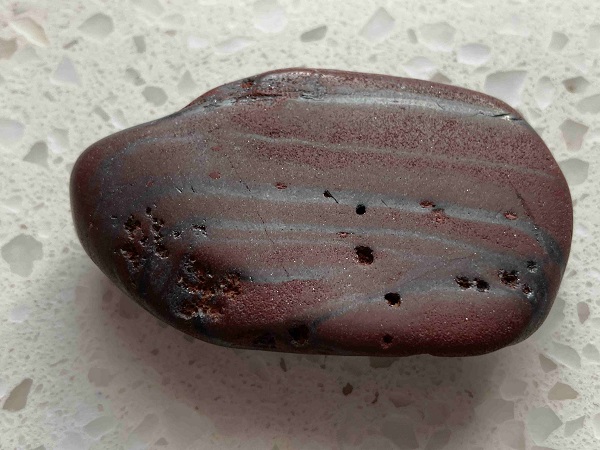
My Paleontologist/Geologist spousal unit Thor Talks more rocks!
In an earlier blog, I commented on our (or my) current obsession with polishing rocks and the stories they tell. Here’s the latest batch of beach pebbles that Sara and I gathered, nicely tumbled:
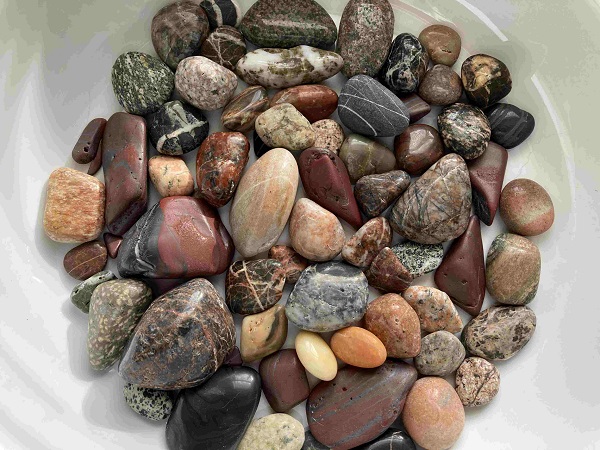
(You may have noticed a few chunks of the dark red and black banded iron, which we did not gather on a beach.) To explain these stones, I’ll first explain this nice, polished sandstone pebble:
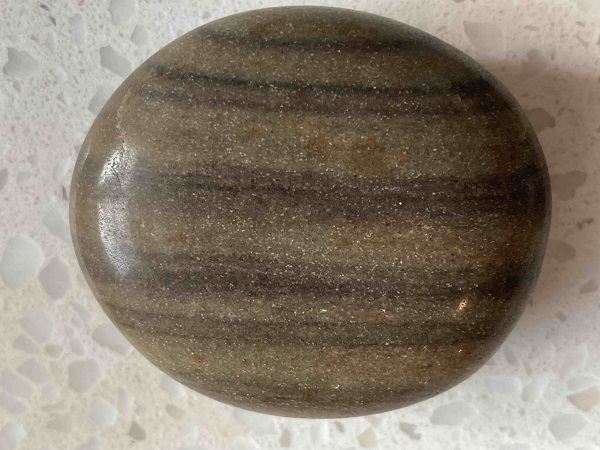
This is a sedimentary rock that was deposited in water. It is composed of layers of light and dark colored sand. Each layer is continuous and undisturbed. This kind of deposition is common in lakes and is typically due to seasonal variations in rain. Heavy rain means runoff carrying lots of sediment flowing into the lake, leaving the thicker light-colored band of sand followed by a thinner layer of dark finer sediment lying on top of that. The fact that the layers are undisturbed indicates that there were very few organisms in the bottom to stir things up. This is pretty common in deep lakes that become anoxic (i.e. no oxygen) during part of the year and are largely uninhabited.
Now for another rock backstory. Some of my favorite rocks to admire are Banded Iron Formations (BIF). Talk about a story! These rocks are about 2.5 billion years old and record one of the most dramatic events in the history of Earth. Below is a typical piece. It is composed of alternating layers of iron and chert.
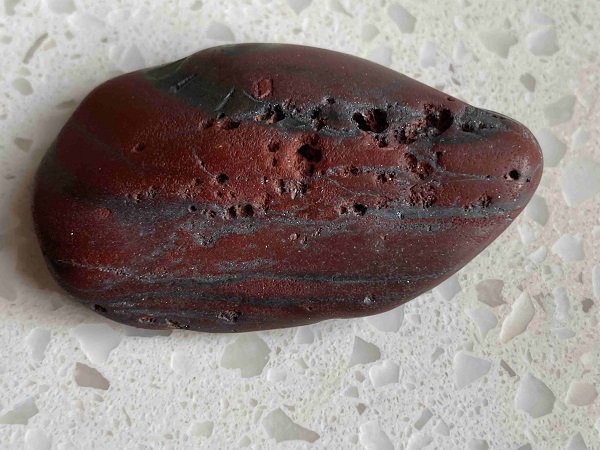
Here it is turned over.
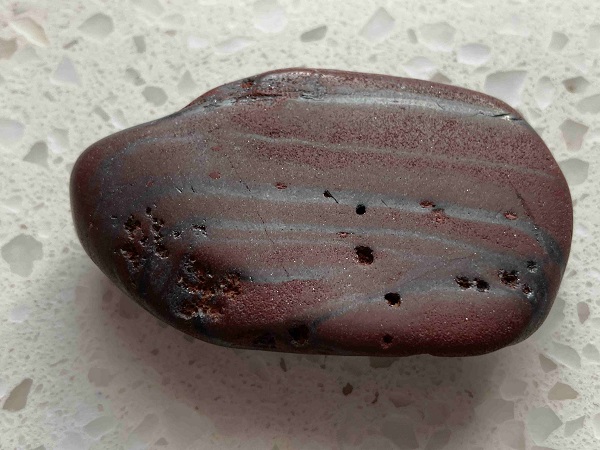
Earth is about 4.5 billion years old. The first life on Earth appeared about 3.8-3.5 billion years ago, a primitive form of single-celled life called cyanobacteria. Early Earth had no oxygen in the atmosphere, and the early cyanobacteria were anaerobic, meaning that oxygen was poisonous to them. They lived in the oceans and fed by photosynthesis, which produced oxygen as a waste product. This waste oxygen dissipated in the water and caused them no harm. However, over time, the oxygen would build up in the oceans to dangerous levels. Fortunately for the early Earth colonizers, there was an abundant supply of free iron dissolved in the water. When oxygen levels rose to a certain point, the iron would become oxidized and settle to the bottom as a thin dark layer. In BIF, this iron layer is usually overlain by a red layer of chert. So over hundreds of millions of years, the cyanobacteria happily produced poisonous oxygen, and it was conveniently swept away by the dissolved iron. Eventually, however, the iron started to run out, and it was no longer able to remove the oxygen. Free oxygen built up in the oceans, killing cyanobacteria, and then leaking out into the atmosphere, killing anaerobes and unleashing the greatest chemical pollution extinction event in Earth’s history. Fortunately, some organisms developed means for counteracting the toxic and corrosive oxygen and even developed respiration methods that used it. The anaerobes that did not die sought refuge deep in the mud (think stinky swamps). The oxygen breathers (aerobes) went on to perform glorious evolutionary feats such as multicellularity, skeletons, and fallen arches.
So when you look at a piece of Banded Iron, think of all those trillions of cyanobacteria (veeerrry distant cousins of ours, BTW) that, through atmospheric pollution, destroyed their own world, but left us with oxygen to breathe and a bounteous legacy of iron, which turned out to be very useful.
*****
Thor Hansen, Roving Bionic Paleontologist (two titanium shoulders!), has retired as Professor of Geology and Paleontology at Western Washington University, but still teaches “Dinosaurs” and “The Science of Monsters” online. He shares Sara’s Geezer Adventures as she harvests story material.
*****
You will find The Rambling Writer’s blog posts here every Saturday. Sara’s latest novel from Book View Café is Pause, a First Place winner of the Chanticleer Somerset Award and an International Pulpwood Queens Book Club selection. “A must-read novel about friendship, love, and killer hot flashes.” (Mindy Klasky). Sign up for her quarterly email newsletter at www.sarastamey.com

